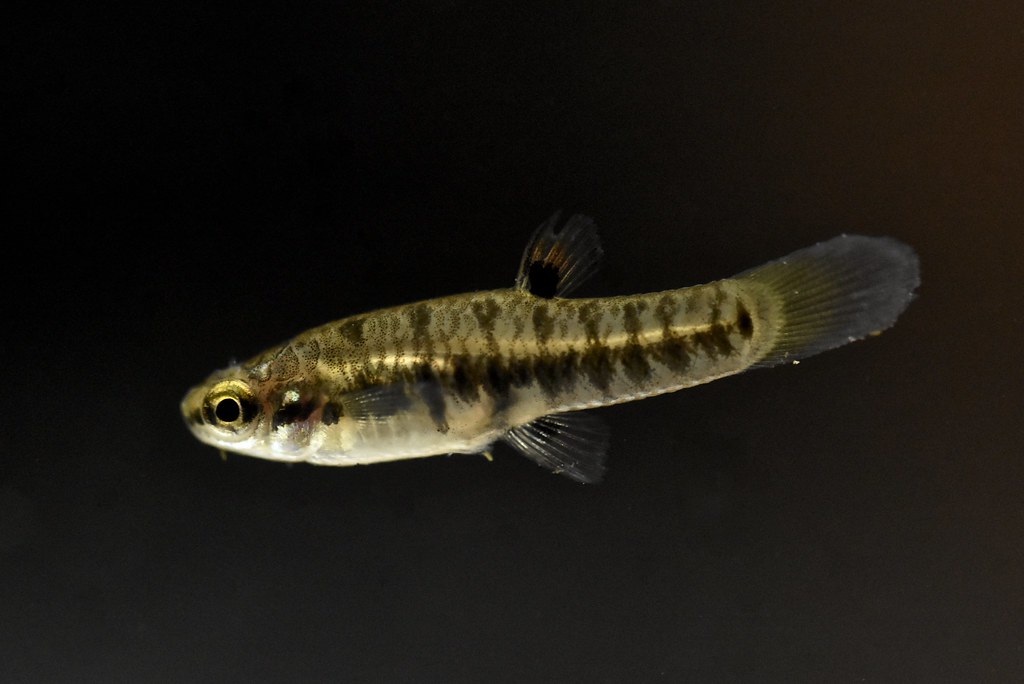#least killifish
Text


least killifish (heterandria formosa) are the smallest livebearing fish in the world. a fully grown female is usually about half an inch or so long, so you can only IMAGINE how tiny the babies are when they first pop out. to illustrate this point, here’s one that’s likely about a week old judging by how developed it is (though i can’t tell for sure, as i’ve got several mature females in this colony and have found fry of all ages and sizes while trimming the plants in here these past couple days. the newborn fry, believe it or not, are even tinier and therefore wholly impossible to photograph with my phone)
22 notes
·
View notes
Text




Post clean-up fish pics
Took so much damn guppy grass and algae out this time. The amount of light we get here is sometimes absurd.
The least killis are loving life today!
19 notes
·
View notes
Text
What kind of creatures reside in the murky, mucky storm water retention pond at my work?
One of the world's smallest! The Least Killifish is the smallest live-bearing fish in the world! They live alongside a zillion Eastern Mosquitofish and possibly some other species I haven't caught yet to identify.

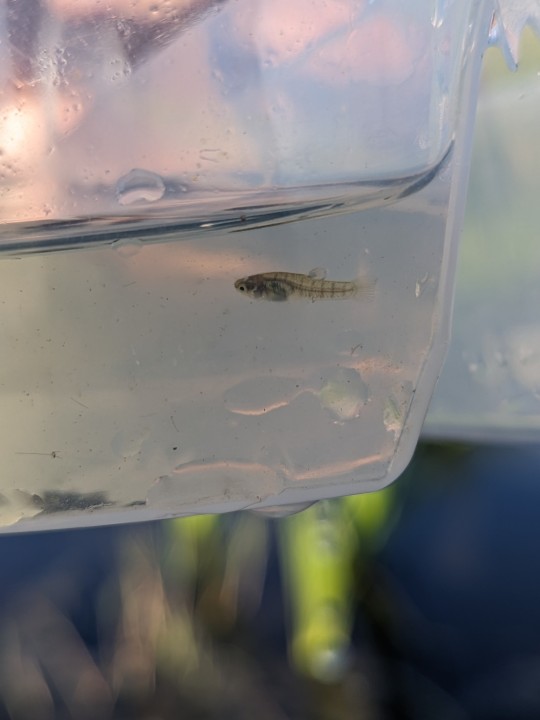
A bunch of softies! I see softshell turtles a lot, butI haven't looked up what species they are yet.

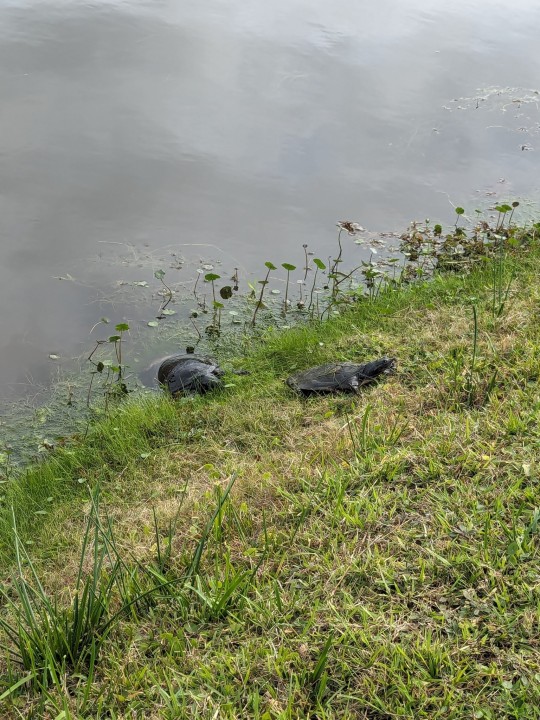
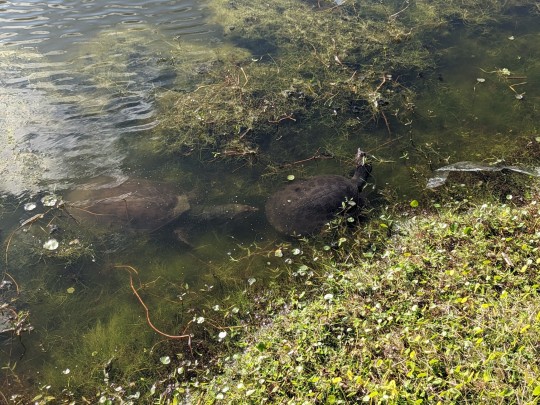
Giant, hella invasive fish! (Plecostomas added a while ago to control algae. They do not) Thankfully, the pond does not directly output to any other bodies of water, even if it floods, and it has a fish fry control grate on the overflow outlet for the grass carp that were recently added.

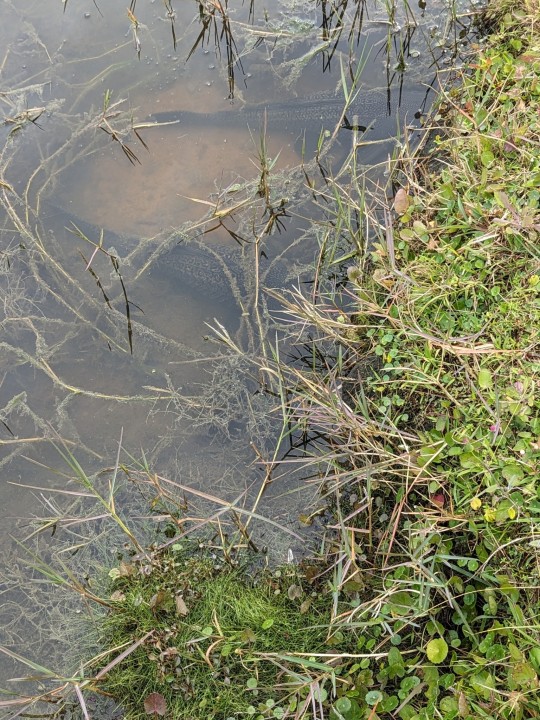

Gators!! Mainly small ones, safely growing bigger away from the adults. I see them basking or floating almost every day. I stumbled on this guy napping while I took a walk.
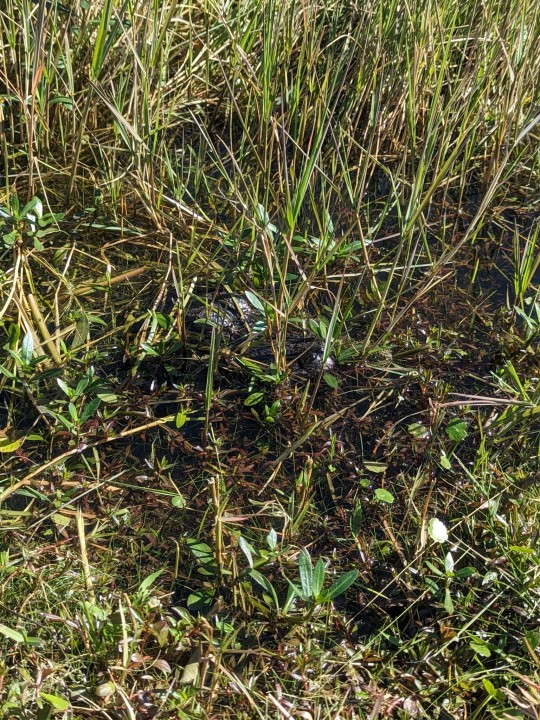
I recently got up enough courage to offer to help take care of the pond, which has an immensely thick layer of muck on the bottom and so little oxygen that the fish hang out in a few shallow channels most of the time.
To my surprise, management happily agreed and is giving me everything I requested to take care of it, including a nice aerator and hundreds of dollars of beneficial bacteria tablets. Even my suggestions to change the landscaping routine and plant native pond plants were enthusiastically accepted.
After being fired from a well paying job because I dared to ask for (completely free, barely visible) disability accommodations, this event is mind blowing to me.
#pond#fish#least killifish#plecostomas#natural pond#fish pond#Florida#nature#softshell turtles#turtles#turtle#described#described images
1 note
·
View note
Video
Least Killifish by John Williams
Via Flickr:
Montgomery County,Texas
0 notes
Text
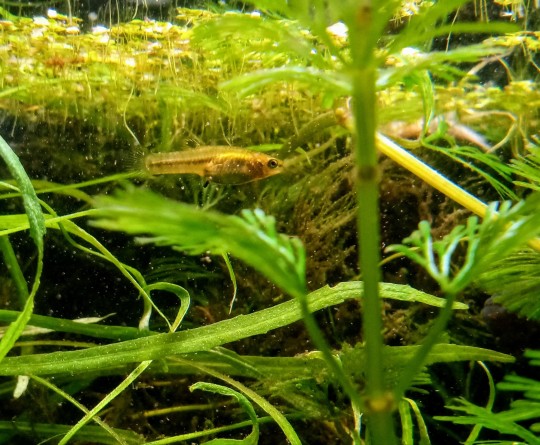
Least killifish Gold form, Heterandia formosa. The tiniest live-bearer
50 notes
·
View notes
Text
VA Native Fish Hunting - 23
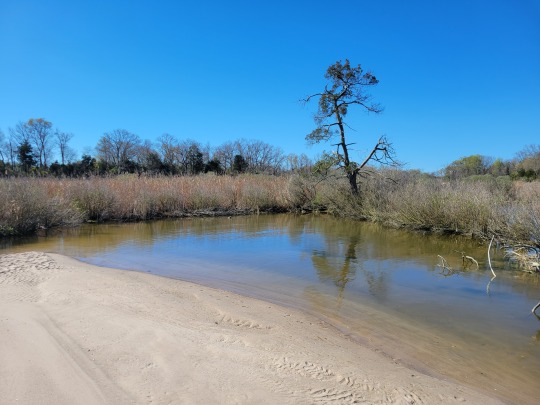
With Winter just behind us, I figured it would be an opportune time to pick up the fish hunting again! I went to a local area that has both freshwater and brackish access with a few cool finds!
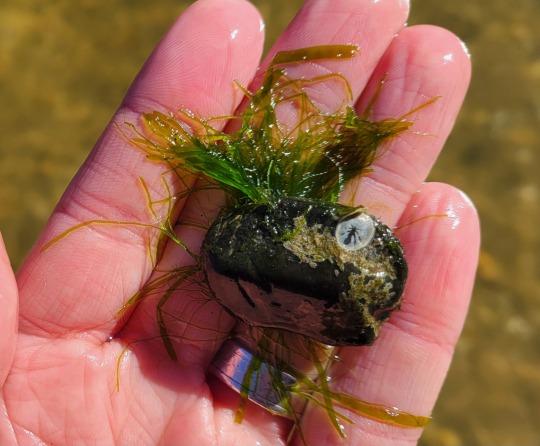
Macro algaes are always so interesting to me but I'm bad at identifying it. I'm pretty sure this a filamentous Ulva spp. but hard to say. They range from little clumps like this to big sheets over a foot long - and according to at least one book are edible for people too.
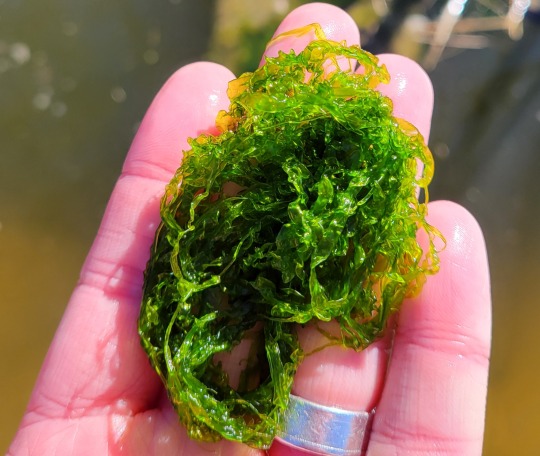
More Ulva spp, I pulled this up from a log off shore - it seemed more to rest on it than grow from it. This batch was SO COOL partly on how much there was but also the texture. I'm super tempted to get some for an aquarium.

In the brackish section, I did a number of net dippings and only managed to catch one fish - a Mummichog (Fundulus heteroclitus). This species has so much variety to them; some populations like the one this guy is from, there's an iridescent blue and black dot on the dorsal fin. A handsome fish in a subtle way.
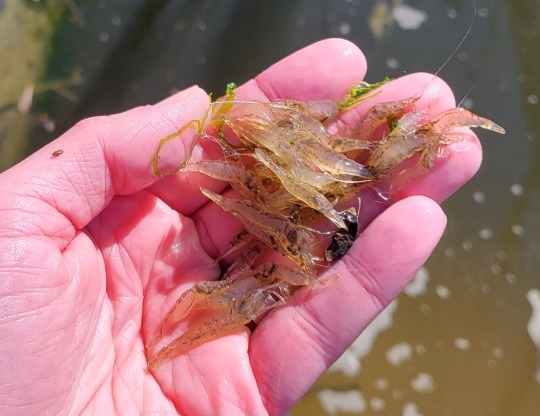
What I did catch a lot of were shrimps! These Grass Shrimps (Palaemon spp) are super common around here. There are a few species in this state and I have a book that helps distinguish them, but I'd need better zoom in order to make that a reality.

A little easier to see their features here.

Before I left the tributary, I saw this cloud of striped fishes swimming around. My knee jerk reaction were Striped Killifish, but I've never seen them this far upstream. I did my best to catch only a small amount.

Makes more sense - Sheepshead Minnows (Cyprinidon variegatus) are freshwater to fully marine pupfish and found around this area. I have never seen them school like this, though, so that's pretty awesome.

I also tossed around a couple of minnow traps in this freshwater pond to see what I could wrangle. Turns out, not much.

One (1) female Mummichog, and...

One (1) male Mummichog. I love comparing the freshwater to brackish to saltwater populations of these fishes. Such diverse coloration!

Not aquatic but a first for me - I found a neat friend! This Wharf Roach was nice enough to pause for a few photos before being sent on their way.

Bonus pic - after the hunt I stopped by a new bait store in the area. They had a fantastic deal on American Eels! If I had room for a 3 to 4 foot long predator slash escape artist, I know where I would go buying one!
24 notes
·
View notes
Text

Mangrove Rivulus (Kryptolebias marmoratus)
Family: Killifish Family (Rivulidae)
IUCN Conservation Status: Least Concern
Native to northern South America north up to Florida, the Mangrove Rivulus favours shallow, swampy, brackish water, but is extraordinarily hardy and able to tolerate a huge range of environmental conditions, including anywhere from freshwater conditions to salinities of up to 68 parts per thousand (for context, seawater is typically only around 35 parts per thousand) and water temperatures of as high as 38 degrees Celsius (over 100 degrees Fahrenheit.) Water conditions in coastal mangrove environments change frequently as a result of weather and tidal activity, and while the immense hardiness of members of this species allows them to endure most adverse conditions, if conditions become too unsuitable for them they are able to survive by temporarily leaving the water entirely, leaping onto land and taking shelter in tree cavities or abandoned burrows, respiring through their skin and remaining in their shelter for up to 9 weeks at a time until conditions improve. While little is known about this species' life cycle in the wild, it is known that they lay their eggs (which can survive being exposed to air for prolonged periods of time, but which will only hatch when submerged) in shallow areas that are difficult for predators to access, and that there are no females of this species; every Mangrove Rivulus is born as a hermaphrodite and eventually develops the ability to fertilize their own eggs and essentially reproduce asexually, but upon reaching an advanced age some individuals may lose their ability to produce eggs and transition into males that will actively court hermaphroditic individuals in hopes of being allowed to fertilize their eggs, presumably to maintain genetic diversity. Members of this species feed mainly on small invertebrates and are noted to be territorial and highly aggressive towards conspecifics, although they will neither fight nor eat during periods spent on land.
——————————————————————————
Image Source: https://www.inaturalist.org/taxa/103727-Kryptolebias-marmoratus
#Mangrove Rivilus#Mangrove Killifish#killifish#killifishes#fish#fishes#zoology#biology#icthyology#marine biology#animal#animals#wildlife#South American wildlife#North American wildlife#rivulus#cute little freak fish...
24 notes
·
View notes
Note
I've been a huge fan of brackish species for many years now, had a tank about 15 years ago and would love to do another some day. I do have a question I've always wondered about. Most people ask which freshwater species can tolerate brackish conditions, low to moderate usually. But I've always wondered are there any fish commonly sold as saltwater species that can be acclimated down to a brackish level and actually survive there for extended periods of time? I'm talking about a salinity of around 1.010-1.015. I'd just be curious if it's possible.
There are two answers here - a general and a specific. From a general standpoint, I think many marine fish possibly have more tolerance for hyposalinity than we give credit for. At least one significant, well respected author and aquarist, Lance Ichinotsubo, states he keeps his fish only marine tanks at 1.010 over the long term with great results. I couldn't say myself how effective or ethical this is but I imagine it's an topic that is vastly underexplored.
Specifically, there are a good handful of marine species that can tolerate this range. Of course there are the brackish water staples like Scats, Monos, Tete Sea/Silver Shark Catfish, and any number of flounders/soles, killifish, and livebearers that make their way into full salinity for long stretches of time. But there are also several Puffer species, not to mention Needlefish, a few Stonefish, Lionfish, Zebra and Peacock Bennies, Batfish/Spadefish (Platax spp being well known), Stripies, Barramundis, several Snapper species, Sergeant Majors, and a few Waspfish. And these are only the species that appear in the aquarium trade! I suspect several hundred species can make that transition.
8 notes
·
View notes
Text
[CM] Fish
This is our last lexicon post! For now, at least. Guess it’s time for me to get some different things ready for posting... until then, I bring fish. Below are translations for ten different species. It can be assumed that all these species are hunted unless it’s noted otherwise.
White sucker (Catostomus commersonii) - Mlowo (mlub*, owo*)
Long pale fish with a distinct circular suckermouth. Most often found on the bottom of water bodies.
Golden shiner (Notemigonus crysoleucas) - Shish
Silver-yellow fish. Found in quiet, weedy waters.
Creek chub (Semotilus atromaculatus) - Shulp
Medium-sized minnow found in small streams and rivers.
Banded killifish (Fundulus diaphanus) - Seebip (eeb*, sip*)
Small striped fish found schooling in shallow water.
Mummichog (Fundulus heteroclitus) - Haish (hai*)
Little fish with many thin stripes, named for its dense schooling habits.
Chain pickerel (Esox niger) - Kishki
Long, distinctly-shaped pike with chain-like stripes and sharp teeth. Our protagonist, Pickerelstripe/Kishkiseek, is named after chain pickerels!
Pumpkinseed (Lepomis gibbosus) - Paliub (paliu*, mlub*)
Colorful and often found in groups. Also known as punkies, which is a prefix I now want to use...
Largemouth bass (Micropterus salmoides) - Glubub
Distinct green fish that can grow very large, possibly being the biggest on ClayClan territory! They provide a challenging but rewarding hunt experience.
Yellow perch (Perca flavescens) - Shik
Large perch that comes in shades of yellow, green, and black. Named for its spiky fins that deter most hunters.
Brown trout (Salmo trutta) - Ushoob
Heavily spotted trout found in cold water. Challenging to hunt.
3 notes
·
View notes
Text
Feeding the banjo catfish deshelled mealworm as least killifish look on in envy.

Their name is Beufer
#I bought the catfish from aqatic arts and the least killis from bioaquatix#I love them#using my aquarium as a way to cope with grief atm#aquarium#banjo catfish#banjocatfish#catfish#fish#tropical fish#home aquaria#video#unique#rare fish#BUNOCEPHALUS CORACOIDEUS#animal#animals#cute animals#freshwater#freshwater aquarium#animal feeding
5 notes
·
View notes
Text




Posting pics of my Pygmy/Least Killifish species tank for @thenativetank
I apologize for the poor photo quality, lighting in my apartment causes terrible glare until the evening. If you want a closer detail of the fish themselves, I'd be more than happy to grab more later on!
I've had this tank for just shy of two years and I love it dearly. Needs a water change and plant trim this week, though.
33 notes
·
View notes
Video
n380_w1150 by Biodiversity Heritage Library
Via Flickr:
Annual report of the New Jersey State Museum Trenton, N.J. :MacCrellish & Quigley, State Printers,1902-1915. biodiversitylibrary.org/page/15571197
#heterandria formosa#least killifish#fish#New Jersey#Natural history#New Jersey State Museum#Periodicals#Smithsonian Libraries#flickr
1 note
·
View note
Text

A pretty reduced pattern Heterandia formosa, Least Killifish livebearer. The patterning on wild populations has a ton of variety. I have mostly individuals with bold vertical stripes.
41 notes
·
View notes
Text
VA Native Fish Hunting - 20
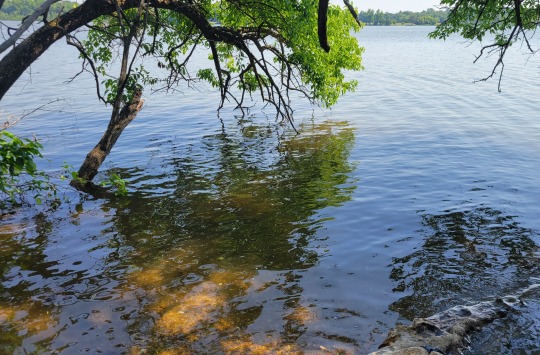
So apparently I started recording my fish hunts two years ago this month and it seems appropriate that I hit a neat milestone in entry number 20 (not counting interludes)! And as kind of a neat coincidence, I had an eventful hunt with a few new species to share! Hope you enjoy :)

The tide was high today and the beach was gone (frown!) so I was unclear what luck I'd actually have hunting fishes. I've been to this location before and had a good idea of what I was likely to find here. What I had not found before were Bluespotted Sunfish (Enneacanthus gloriosus) here! This little guy was dead and floating right at my start point - both a good sign and a bummer at the same time. What I thought was neat was this sunfish, unlike literally every other one I had found in VA, was in a basic pH river rather than an acidic bog. Makes me wonder what little offshoots I can explore with a kayak.

Another fish I haven't found here were Banded Killifish (Fundulus diaphanus) like this beautiful fellow above! Among my favorite NANFs for home keeping (or in general), this guy was iridescent gold and blue, bright breeding colors for this species. I let him go - hopefully the ladies will appreciate his "near death encounter" with a massive beast (i.e. me) and living to tell the tale!
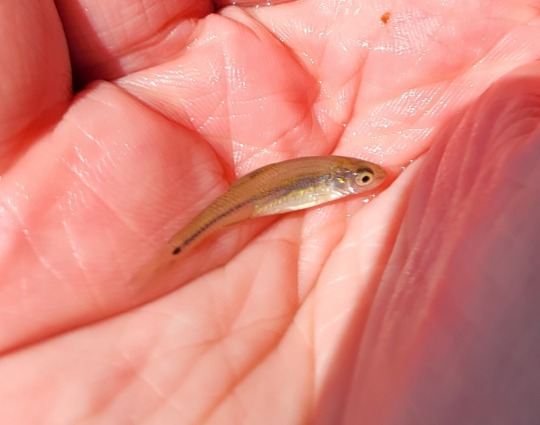
Last time I came here, the most plentiful fish I caught, by far (like, 50-to-1) were Eastern Mosquitofish. This time? The most common catch were these Spottail Shiners (Notropis hudsonius), one of our small native minnows. Though they max out at 6 inches, 3 inches is much more common, and most of what I caught were about 1 to 1.5 inches. Probably only hatched earlier this year.
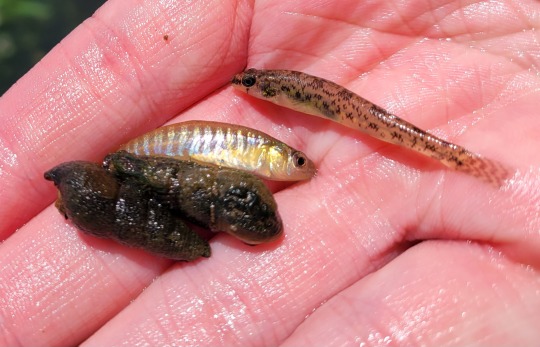
One net swipe here! A couple of fish, a couple of snails. Who can argue?

I caught maybe 3 or 4 of these Tesselated Darters (Etheostoma olmstedi) at this location - I love love LOVE the two I have in my tank at home and wouldn't mind more at some point, but I wasn't looking to keep any fish today, so they got to swim back home. But let me reiterate that anybody who keeps a North American biotope tank would do well to look into the Etheostoma genus of Darters!
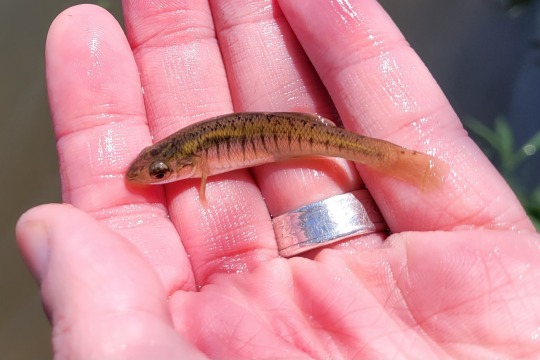
It took me a few swipes to finally catch a female Banded Killifish, which as you can see do look significantly different from the breeding colored males. Still great aquarium fish for sure.

Though I only saw a handful of live ones, I saw a ton of shells for these Chinese Mystery Snails (Cipangopaludina chinensis), an invasive critter that has overpopulated in the area. How exactly one shell got wedged (very hard by the way!) into another shell is beyond me.

As I was swiping my net, I felt a crawling up my arm that gave me the willies (tick season does that to me) but very pleasantly it was NOT a tick and was instead this Blue Dasher (Pachydiplax longipennis). He was trying to dry his wings out it seemed - probably recently emerged - and was very happy to pose for some pictures. I set him on a tree stem and he went upon his way.
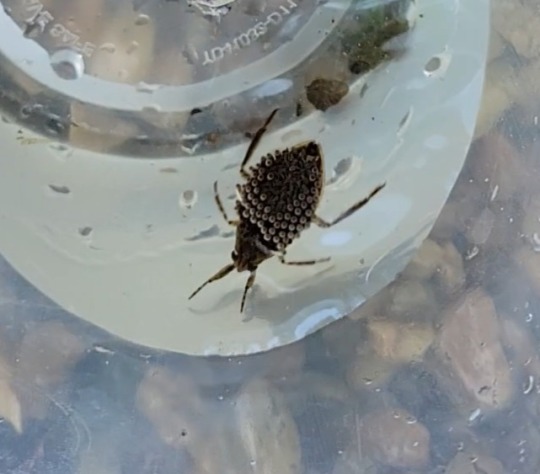
Another first for me was this Toebiter (Belostoma flumineum), carrying eggs on its back! Very cool animal, but given their terrible bite (they ARE called Toebiters after all), I wasn't willing to handle it for a photo op. So. Into the plastic container it went for a few quick snaps!

What I actually came here for today was some Hydrilla (Hydrilla verticillata), another invasive species local to the area. But I'm looking to add some variety to my 55 gallon plant selection, and I figured it was worth a try. If it doesn't work, well, then at least I removed some invasives from the area.
35 notes
·
View notes
Text


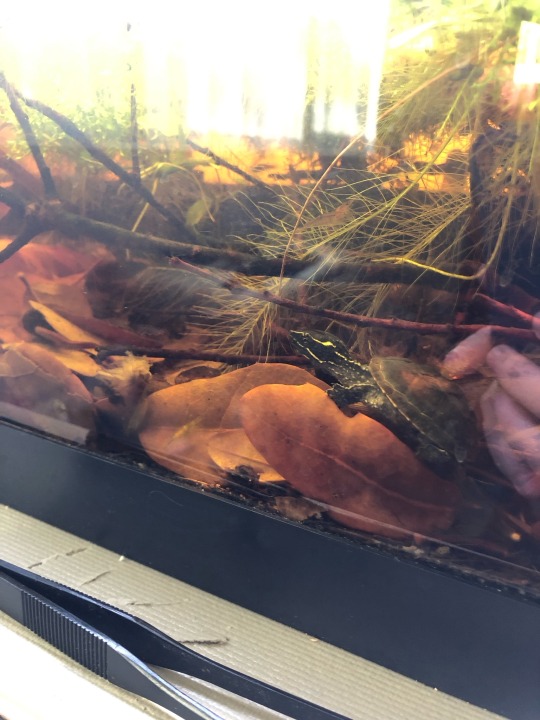

my musk turtle grow-out tank! 20 gallon long with heat UVB lamps as well as a 12” LED aquarium plant light
Initially I was conceptualizing it as a true biotope but some cherry shrimp got in and have started breeding like crazy. In addition to Wackie the musk turtle, there are least killifish, dwarf crayfish, and the cherry shrimp. Right now it’s a sponge filter setup with weekly water changes but everyone seems to be thriving!
4 notes
·
View notes
Text
Vesper Reis
“This world has so many things left undiscovered... Would you like to join me?”

template by @unfinished-projects-galore
Technical Info
Japanese: ベスパー ・レイス
Also known as: Veve / Killifish-chan (Floyd) / Jeune Archiviste (Rook)
Voice Claim: Romi Paku
Bio Info
Gender: They/them
Height: 182 cm
Eye color: Aqua green
Hair color: Grayish pink
College Info
Dorm: Diasomnia
School Year: 2nd
Class: 2-B (student nº 20)
Club: Mountain Lovers’ Club
Best Subject: History
Fun Facts
Dominant Hand: Left
Favorite Food: Roast Rabbit with Potatoes
Least Favorite Food: Mango Curd
Dislikes: Disrespectfulness and ignorance.
Hobby: Practicing ancient magic
Talents: Potion making
Unique Magic: “Wood to Gold"
Vesper is capable of turning an object into another different one. This can only happen if both objects are of the same size, weight and body mass.
Vesper is a parental figure to the 1st years, acting as the voice of reason and wisdom.
Will punch a b*tch if needed.
As much of a fashionista as Vil -- their style is goth and/or pastel goth. Some cottage core. Definitely darker themes.
Skirts, high heels and big hats galore.
Doesn't wear silver accessories due to fae being weak to it. Wears surgical steel and gold.
There's a rumor they dance naked under the moonlight and make rituals and sacrifices. Yet to be confirmed. (Rook says the rumor is wrong and, instead, that they take walks under the moonlight in search of small fae and ingredients for their spells.)
Secretly very cuddly. Touch starved.
Comes from a traditional witch/wizard family that has been in contact with fae for as long as they can remember. Has a grimoire containing spells from the old times.
Their magic has faint traces of ancient magic mixed.
Smells like flowers and old books.
#drawings#Vesper Reis#twst oc#twisted wonderland oc#twisted wonderland#twst#original character#oc#my ocs#ocs
10 notes
·
View notes
